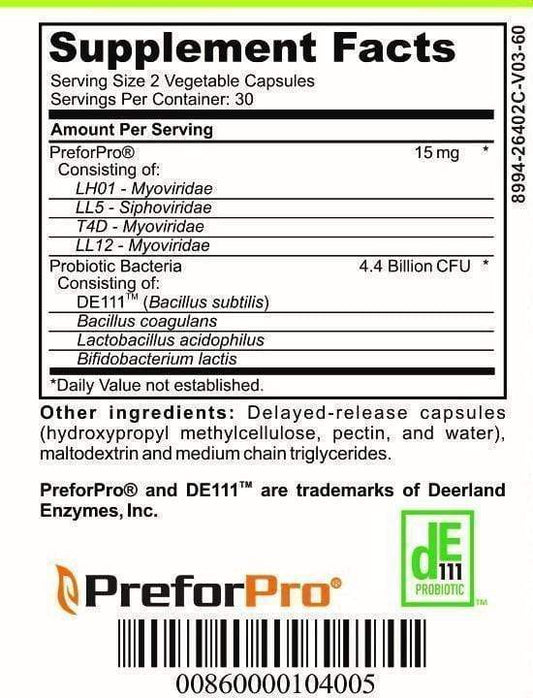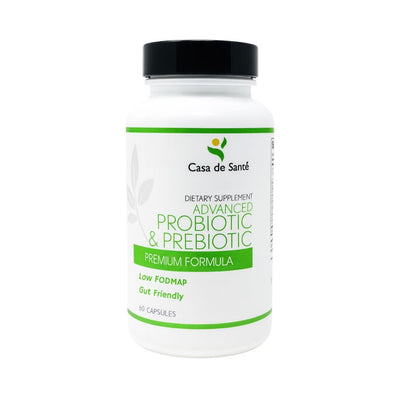Quinoa Flour Vs Corn Flour
Quinoa Flour Vs Corn Flour
Understanding the Basics of Quinoa Flour
Quinoa flour is derived from the seeds of the quinoa plant, a flowering plant that belongs to the amaranth family. The seeds are ground into a fine powder, resulting in a versatile flour that can be used in a variety of recipes. Quinoa flour is known for its high protein content, making it a popular choice for those looking to incorporate more plant-based protein into their diets.
One of the key benefits of quinoa flour is that it is gluten-free, making it an excellent alternative for individuals with gluten sensitivities or celiac disease. It is also rich in essential vitamins and minerals, including iron, magnesium, and folate. Quinoa flour has a subtle nutty flavor profile, which adds a unique taste to baked goods and other dishes.
A Comprehensive Guide to Corn Flour
Corn flour, also known as maize flour, is made by grinding dried corn kernels into a fine powder. It has been a staple ingredient in many cultures around the world for centuries. Corn flour is naturally gluten-free, making it an ideal choice for individuals with gluten intolerances.
The texture of corn flour is smooth and fine, with a slightly sweet taste. It is commonly used as a thickening agent in soups, stews, and sauces. Additionally, corn flour is a vital component in the production of tortillas, cornbread, and other traditional dishes in various cuisines.
Nutritional Comparison: Quinoa Flour Vs Corn Flour
When comparing the nutritional profiles of quinoa flour and corn flour, there are some notable differences. Quinoa flour is higher in protein, containing all nine essential amino acids. It also has a higher fiber content, which aids in digestion and promotes satiety.
On the other hand, corn flour is a good source of carbohydrates, providing energy to the body. It is also rich in vitamin C, iron, and niacin. However, corn flour lacks the complete protein profile found in quinoa flour.
Taste and Texture Differences: Quinoa Flour Vs Corn Flour
In terms of taste and texture, quinoa flour offers a nutty flavor that adds depth to recipes. It has a light and fluffy texture, which works well in baked goods like muffins, pancakes, and cookies. The slightly sweet taste of corn flour, on the other hand, brings a pleasant richness and earthiness to dishes. Corn flour has a denser texture, giving an appealing crumb to items like tortillas and cornbread.
Cooking and Baking with Quinoa Flour: Tips and Tricks
When using quinoa flour for cooking and baking, it is important to note that it does not bind as easily as wheat flour due to its lack of gluten. To compensate, you can combine it with other gluten-free flours like tapioca flour or xanthan gum to improve the texture and structure of your recipes.
Moreover, quinoa flour has a higher moisture content than regular flour, so you may need to adjust the amount of liquids in your recipes. It is advisable to start by substituting only a portion of the flour in a recipe until you become more familiar with its properties.
Exploring the Culinary Uses of Corn Flour
Due to its versatility, corn flour is widely used in various cuisines around the world. It serves as a primary ingredient in Mexican cuisine, playing a crucial role in making traditional dishes like tortillas, tamales, and enchiladas. In Southern cooking, corn flour is used to make cornbread, hushpuppies, and other beloved classics.
Additionally, corn flour is a popular choice for thickening soups, stews, and sauces due to its excellent binding properties. It can also be used as a coating for fried foods, offering a crispy texture and slight sweetness to the dish.
Gluten-Free Options: Quinoa Flour Vs Corn Flour
Both quinoa flour and corn flour are excellent gluten-free options for individuals with gluten intolerances or those following a gluten-free diet. However, it is important to note that not all corn flour products are gluten-free. Always check the packaging for any potential cross-contamination or shared equipment warnings.
Quinoa flour, being naturally gluten-free, provides a safe alternative for those with celiac disease or wheat allergies. It can be used in a wide range of recipes as a substitute for wheat-based flours.
Health Benefits of Quinoa Flour: What You Need to Know
Quinoa flour offers numerous health benefits, thanks to its impressive nutritional profile. It is a rich source of plant-based protein, containing all the essential amino acids required by the body. Protein is essential for cell repair and growth, aiding in muscle development and immune function.
The high fiber content in quinoa flour promotes healthy digestion and helps regulate blood sugar levels. Quinoa flour is also packed with vitamins and minerals, including iron, magnesium, and folate, which are all vital for maintaining overall health and wellbeing.
The Role of Corn Flour in Traditional Cuisine
Corn flour has played a significant role in traditional cuisines around the world. In Latin American countries, corn flour is a staple ingredient used in traditional dishes like arepas, pupusas, and empanadas. It is deeply ingrained in the culinary heritage of these regions and holds cultural significance.
In Native American cuisine, corn flour has been a dietary staple for centuries. It forms the basis of dishes like corn-based porridge, bread, and various corn-based beverages. Corn flour has also been a vital commodity for indigenous communities, often used as a trade item due to its nutritional value and versatility.
Allergy-Friendly Alternatives: Quinoa Flour Vs Corn Flour
Quinoa flour and corn flour are both excellent allergy-friendly alternatives for individuals with common food allergies. Quinoa flour is a viable option for those with gluten, wheat, or grain sensitivities. It can be easily incorporated into a gluten-free or grain-free diet.
Corn flour, specifically when labeled as gluten-free, is also suitable for individuals with gluten intolerances or wheat allergies. It provides a safe and accessible option to those seeking alternatives to traditional wheat-based flours.
Shelf Life and Storage: Quinoa Flour Vs Corn Flour
When it comes to shelf life and storage, both quinoa flour and corn flour require similar precautions to maintain their quality over time. It is advisable to store them in airtight containers in a cool, dry place, away from direct sunlight and moisture.
Quinoa flour has a slightly shorter shelf life compared to corn flour due to its higher fat content. However, if stored correctly, both flours can last for several months. It's always best to check the expiration dates on the packaging and use them within the recommended time frame for optimum freshness.
Incorporating Quinoa Flour into Your Everyday Recipes
Quinoa flour can be a wonderful addition to your everyday recipes, providing a nutritional boost and adding a unique flavor. You can incorporate it into a variety of dishes, from breakfast options like pancakes and waffles to savory items like homemade bread and pizza crusts.
It's worth experimenting with different ratios to find the right balance of quinoa flour with other flours in your recipes. As you become more comfortable with its texture and flavor, you can start exploring more innovative uses in dishes like cookies, cakes, and even pasta.
The Environmental Impact of Quinoa vs Corn Production
When considering the environmental impact, both quinoa and corn production have their respective considerations. Quinoa is known for its resilience in harsh conditions and is typically grown with minimal water and fertilizer requirements. It is often cultivated through sustainable practices, aiding in soil health and biodiversity.
Corn, on the other hand, is a widely grown crop that requires more water and fertilizer inputs. The large-scale cultivation of corn can often contribute to soil erosion and water pollution if not managed properly. It is essential for farmers to adopt sustainable agricultural practices when growing corn to mitigate its environmental impact.
Cost Comparison: Quinoa Flour Vs Corn Flour
In terms of cost, corn flour tends to be more affordable compared to quinoa flour. Corn is a widely grown crop, which makes it more readily available and less expensive to produce. This cost difference can be an important factor to consider when budgeting for your cooking and baking needs.
However, it's worth noting that the price of quinoa flour may vary depending on its sourcing and organic certifications. While it may be slightly more expensive than corn flour, the nutritional benefits and versatility it offers make it a worthwhile investment for many individuals.
Tips for Buying and Selecting High-Quality Quinoa and Corn Flours
When purchasing quinoa and corn flours, it is essential to prioritize quality and ensure that you are buying reputable brands. Look for trusted organic certifications, as this ensures that the products are free from harmful chemicals and pesticides.
For quinoa flour, opt for brands that use whole quinoa seeds for grinding. This ensures that you are getting all the beneficial nutrients present in the seed. Additionally, choose corn flour that is labeled as "stone-ground" or "whole-grain," as these varieties tend to retain more nutrients compared to highly processed alternatives.
Exploring Cultural Significance: Quinoa vs Corn in Different Cuisines
Both quinoa and corn hold significant cultural importance in various cuisines around the world. Quinoa has been a staple food in the Andean region of South America for thousands of years, with deep-rooted cultural and religious significance. It continues to be a symbol of indigenous heritage and represents a vital source of nutrition and sustenance.
In North and Central America, corn has been a dietary staple among indigenous communities for centuries. It is deeply intertwined with the cultural fabric and traditions of these regions. Corn is not only a source of sustenance but also holds spiritual and ceremonial significance in many Native American cultures.
Enhancing Nutritional Value with Quinoa or Corn Flours in Recipes
Both quinoa flour and corn flour can enhance the nutritional value of your recipes. By substituting traditional wheat-based flours with these alternatives, you can increase the protein and fiber content of your dishes, providing a wholesome boost to your meals.
Experimenting with different recipes and incorporating quinoa or corn flours can be a great way to add variety to your diet and explore new flavors and textures. Whether you are looking to increase your plant-based protein intake or cater to specific dietary restrictions, these flours offer a versatile and nutrient-dense solution.
Popular Recipes using Quinoa or Corn Flours for Different Diets (e.g., vegan, keto, paleo)
Quinoa and corn flours can be utilized in various dietary preferences and restrictions. For individuals following a vegan or plant-based diet, quinoa flour can be used to make delicious vegan cookies, muffins, or protein-rich veggie burgers.
For those following a keto or low-carb diet, corn flour might not be suitable due to its higher carbohydrate content. However, quinoa flour can still be used in moderation to create keto-friendly bread, tortillas, or even pancakes.
Paleo enthusiasts can benefit from using almond or coconut flour instead of corn flour, as these options are grain-free and align with the paleo principles. However, quinoa flour can still be a part of a paleo-inspired diet for individuals who incorporate pseudo-grains into their meals.
Exploring the Origin and History of Quinoa and Corn Flours
The origin and history of quinoa and corn flours offer fascinating insights into their cultural significance and centuries-long cultivation. Quinoa originated in the Andean region of South America, where it has been cultivated since approximately 3,000 BCE. It served as a staple food for the Inca civilization and played a vital role in their religious practices.
Corn, on the other hand, originated in Mesoamerica around 9,000 years ago. It was one of the primary crops cultivated by ancient civilizations like the Mayans and Aztecs. The cultivation of corn spread throughout the Americas and became a dietary staple in various cultures, leaving a profound impact on their culinary traditions.




























